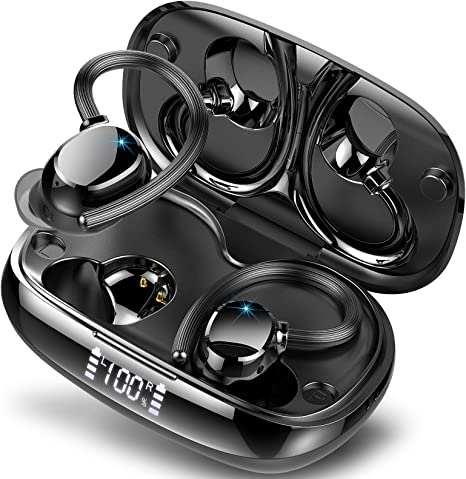From Mathematical Monster to Sonic Laboratory: A Deep Dive into the Elektron Digitone II
Update on July 13, 2025, 5:04 p.m.
I still remember the day a Yamaha DX7 arrived at the studio. It was 1983, and this sleek, button-heavy slab of black metal didn’t just look like the future; it sounded like it. Those crystalline electric pianos, shimmering bells, and punchy, aggressive basses were unlike anything our analog synths could produce. They would go on to define the sound of that decade. But there was a catch, a big one. For all its sonic brilliance, programming the DX7 was a nightmare. It felt like trying to perform microsurgery while wearing oven mitts. We were wrestling with a beautiful, mathematical monster.
That experience left a question lingering in the minds of engineers and musicians for years: How do you preserve the profound depth of this synthesis method while making it not just usable, but genuinely inviting to explore? Decades later, a compact steel box from Sweden, the Elektron Digitone II, provides one of the most compelling answers I’ve ever encountered. To understand its achievement, however, we have to travel back to the source.

Wrangling the Sine Waves: The Stanford Discovery That Changed Music
The story of Frequency Modulation (FM) synthesis begins not in a corporate R\&D lab, but with a happy accident at Stanford University’s Center for Computer Research in Music and Acoustics (CCRMA) in the late 1960s. Composer and researcher John Chowning was experimenting with creating vibrato by using one digital oscillator (a simple sine wave) to modulate the pitch of another. When he pushed the speed of the modulating oscillator into the audible range, something unexpected happened. The sound didn’t just wobble; it exploded into a spectrum of new, complex harmonics, producing rich, bell-like tones from two simple sine waves.
This is the beautiful, non-intuitive heart of FM. Unlike subtractive synthesis, where you start with a rich sound and carve parts away, FM is additive and generative. Imagine one sine wave, the Carrier, humming along peacefully. Now, imagine another, the Modulator, aggressively shaking it back and forth, thousands of times per second. This violent “shaking”—the frequency modulation—creates new harmonic partials called sidebands. The relationship (the ratio) between the two waves’ frequencies and the intensity of the shaking (the modulation index) determines the final timbre. A simple integer ratio might produce a clean, harmonic tone. A non-integer ratio could create dissonant, metallic, or clangorous sounds. This is why FM excels at creating everything from the iconic electric piano tines to alien sound effects—it’s all in the math.

The Taming of the Shrewd Algorithm
The genius of Chowning’s discovery was also its curse. The Yamaha DX7 exposed this math to the user as a daunting list of algorithms and numerical parameters. You were more of a computer operator than a musician, changing a number from 99 to 98 and hoping for the best.
This is the historical context that makes opening the hood of the Digitone II so satisfying. Elektron didn’t just put FM in a new box; they re-contextualized the entire workflow. The cryptic ratios are now assigned to dedicated knobs. The multi-stage envelopes that shape the sound’s evolution over time are presented graphically on the crisp OLED screen. What was once abstract arithmetic becomes a tactile, interactive experience. You are no longer punching in coordinates; you are sculpting in real-time.
And this digital synthesizer is far more than a one-trick pony. It’s a complete sonic laboratory. Beyond the classic FM Tone engine, it offers Wavetone for phase-distorted textures and the Swarmer for immense, clustered super-saws. With a generous 16-voice polyphony, you can build entire arrangements within the machine itself, layering different synthesis types. This is where the instrument transcends being just an “FM synth” and becomes a comprehensive tool for sound design. After shaping the raw tone, you can run it through a chain of six different filter types and a suite of high-quality effects, from shimmering reverbs to brutal, signal-crushing overdrive.
The Clockwork Brain: Where Logic Becomes Groove
If the versatile synthesis engines are the heart of the Digitone II, its sequencer is the soul. And to talk about an Elektron sequencer is to talk about Parameter Locks. In my experience, this single concept is one of the most significant leaps in hardware sequencing in the last twenty years.
Traditional sequencing is like setting up a line of dominoes—you program the notes, press play, and they fall in a predictable line. Parameter Locks, or “P-Locks,” allow you to reach in and change the size, shape, and color of every single domino as it’s falling, without stopping the sequence. On any step of its up-to-128-step sequence, you can lock a unique value for almost any parameter: the filter cutoff, the FM algorithm, the reverb decay, the panning.
Let me paint a picture. Imagine you’re creating an atmospheric pad for a sci-fi soundscape. You program a simple four-chord progression. With P-Locks, you can make the filter slightly more open on the first beat of every bar, giving it a gentle pulse. You can make a single note in the third chord have a much longer decay, letting it hang in the air like a sonic ghost. You can subtly change the FM ratio on random notes throughout the sequence, causing the timbre to shimmer and evolve with an organic, unpredictable quality.
This transforms a static loop into a living, breathing entity. It’s how you create the subtle “human” variations and happy accidents that are the essence of compelling electronic music. This is where the Digitone II truly becomes a laboratory for experimentation—a clockwork brain where cold logic and creative chaos meet to produce groove.

The Laboratory is Now Open
Decades after wrestling with that DX7, the feeling of turning a few knobs on the Digitone II and instantly dialing in a complex, evolving FM patch feels like a form of liberation. The mathematical monster hasn’t been slain; it’s been tamed, given a comprehensible language, and invited into the creative process as a collaborator.
The Elektron Digitone II is a profound statement in instrument design. It proves that depth and accessibility are not mutually exclusive. By honoring the scientific complexity of its heritage while relentlessly focusing on an intuitive user experience, it closes a chapter that began in a Stanford lab fifty years ago. It’s a reminder that the best scientific instruments, whether a telescope or a synthesizer, are those that don’t just show us the world as it is, but empower us to ask, “what if?” The laboratory, with all its immense potential, is now open for everyone.








